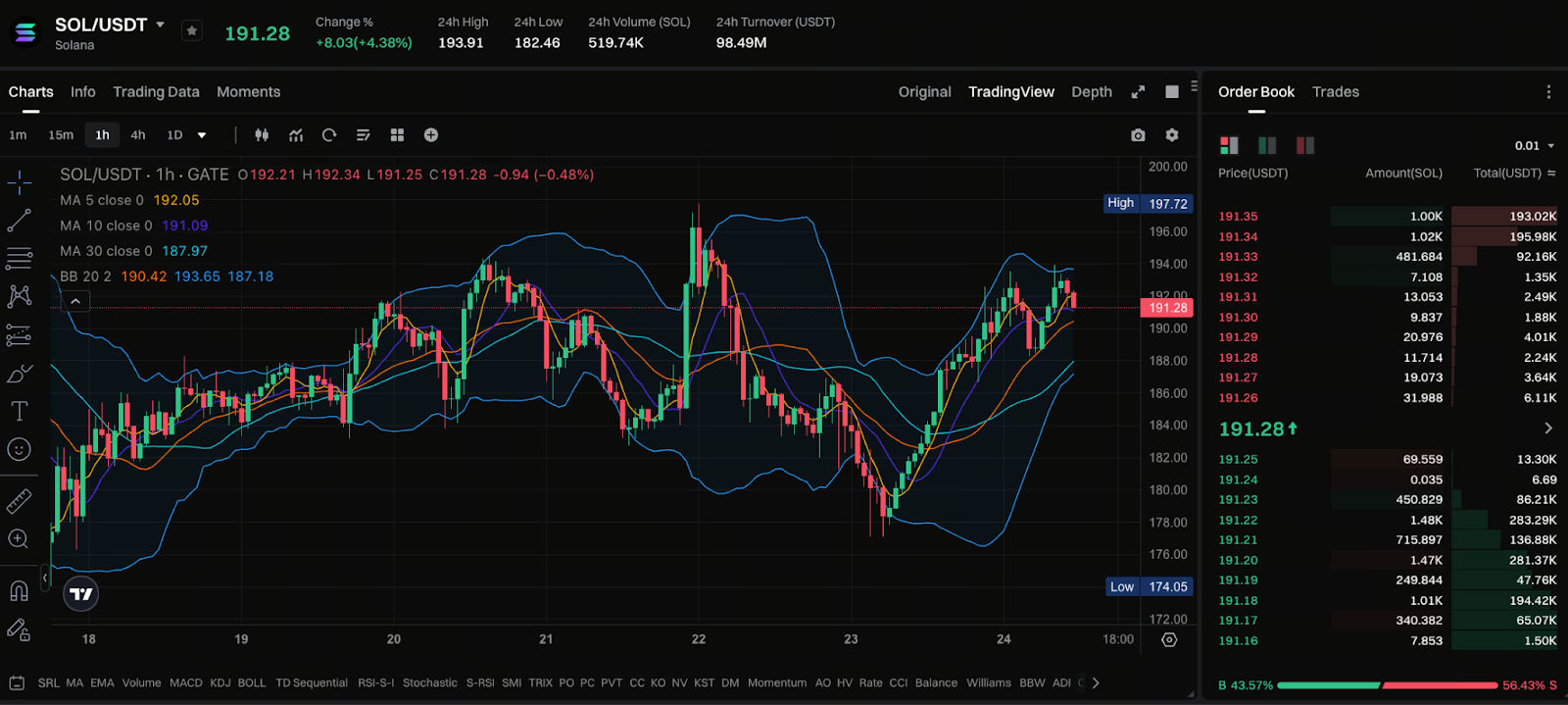Solana Foundation Chair Lily Liu’s “Everything Can Be Tokenized” Speech: Solana Strives to Become the Future Financial Infrastructure
During Shanghai Blockchain International Week, held October 18–22, 2025, Solana Foundation President Lily Liu shared a bold perspective in her keynote: “Everything can be tokenized.” She also highlighted Solana’s commitment to becoming “the infrastructure for Internet finance.”
Speech Background and Core Insights
At the summit, Lily Liu emphasized that the core of blockchain is first “assets,” and second “financial infrastructure.” She explained that Solana’s vision encompasses not only supporting crypto-native assets but also enabling the tokenization of traditional financial and emerging assets. Liu positioned Solana as the “technology platform for Internet finance,” drawing analogies to how Netflix transformed entertainment and Amazon revolutionized e-commerce in the Internet era.
Latest Solana Ecosystem Metrics and Price Performance

Image: https://www.gate.com/trade/SOL_USDT
Public data shows Solana’s ecosystem is experiencing robust growth: in 2024, roughly 7,500 developers joined, applications generated approximately $3.3 billion in revenue, and cumulative funding reached about $8.9 billion. In Q1 2025, Solana’s daily usage exceeded the combined total of all other public blockchains by two to three times. Regarding performance, Solana’s throughput, measured as transactions per second (TPS), surpassed 1,000. Transaction fees are as low as $0.0005, which is close to the efficiency of traditional financial networks.
Regarding price, SOL (Solana’s native token) is currently around $192. While this represents a pullback from previous highs, the ecosystem’s momentum and improved technical benchmarks have attracted more attention.
What Does “Everything Can Be Tokenized” Mean?
Lily Liu’s statement, “everything can be tokenized,” signals the imminent wave of tokenization. She asserts that, in the future, any asset—whether traditional equities, bonds, real estate rights, creator income, in-game items, or logistics assets—could exist, circulate, and be used as collateral in digital token form. These assets may be transformed into digital formats that are recorded and transferred on the blockchain.
In Liu’s view, Solana’s mission is to seamlessly connect the “network layer–application layer–asset layer,” enabling tokenized assets to circulate flexibly on a single, high-performance network. For the average reader, “everything can be tokenized” means that tangible assets, rights, and earnings encountered in daily life may be transformed into digital formats that are recorded and transferred on the blockchain.
Solana’s Path to Becoming the Future of Financial Infrastructure
Lily Liu’s reference to “Internet financial infrastructure” sets Solana’s strategic intent. She underscored that Solana aims not just to solve asset circulation, but to build the foundational platform for payments, clearing, settlement, transfers, and lending in finance.
Specifically, Solana is focusing on the following areas:
- High throughput and performance: transactions per second (TPS) over 1,000 and ultra-low fees open the door for large-scale financial use cases.
- Diverse ecosystem: spanning DeFi, DePIN (Decentralized Physical Infrastructure Networks), AI, payments, and strong collaboration with developers in Chinese-speaking regions.
- Asset diversification: expanding from crypto assets to tokenizing traditional and physical assets, creating a comprehensive cycle of “assets–applications–circulation.”
For newcomers, Solana’s goal is not simply to increase price. Instead, Solana aims to serve as the foundational framework for the next generation of financial networks.
Three Key Points and Risks for Beginners
Key Point 1: Ecosystem Metrics and Developer Engagement
Growth in Solana’s developer community, application revenue, and funding signals increasing vitality. Monitoring developer activity is essential for assessing long-term project viability.
Key Point 2: Deep Integration with Developers in Chinese-speaking Regions
Lily Liu highlighted collaboration opportunities for developers in Chinese-speaking regions in payments, DePIN, and AI. For users in these regions, this could mean greater opportunities for engagement and growth.
Key Point 3: Price and Technology Advancing in Tandem
While SOL currently trades around $192, its value should be evaluated based not just on price, but also on underlying technology (such as transactions per second, fees), progress in tokenization, and institutional adoption.
Risk Warnings:
- Though the idea of “everything can be tokenized” is ambitious, adoption speed and regulatory risks remain significant factors.
- The crypto market is highly volatile; short-term price swings can be substantial, so SOL should not be viewed as a stable asset.
- Despite Solana’s strong performance, competition is fierce among Layer 1 blockchains such as Ethereum, Base, and Aptos.
Conclusion
Lily Liu’s remarks on “everything can be tokenized” reveal Solana’s broader and more structured ambitions: to be not just a fast, efficient blockchain, but the backbone infrastructure for the future of Internet-based finance. Newcomers should focus on understanding this vision rather than just monitoring the price.
Related Articles

Pi Coin Transaction Guide: How to Transfer to Gate.io

Flare Crypto Explained: What Is Flare Network and Why It Matters in 2025

What is N2: An AI-Driven Layer 2 Solution

How to Use a Crypto Whale Tracker: Top Tool Recommendation for 2025 to Follow Whale Moves

Understand Baby doge coin in one article
